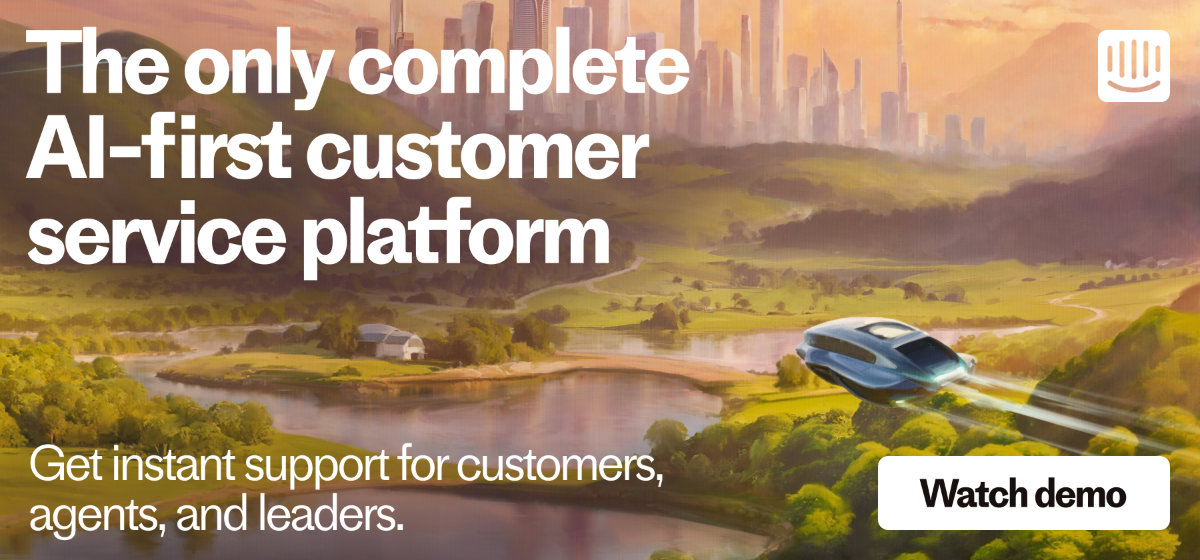
Zapier’s Richard Hall on why your support organization is a brain trust – not a cost center
Richard Hall is the Director of Support Operations at Zapier, the platform built to democratize automation and eliminate manual “busy work” by enabling teams to integrate web applications and build smoother workflows.
This is the fourth in a recurring series of articles looking at how modern support leaders are navigating the support landscape as it continues to evolve. With customer expectations on the rise, we look to find out how support leaders are creating best-in-class experiences to meet those expectations, and what support teams need to be set up for success as the future unfolds.
Embodying Zapier’s mission to make teams more agile and innovative is the company’s customer support organization, focused on empowering their customers to be successful using automation in order to free up precious time to focus on important work.
“It’s really powerful when your company can leverage that brain that you have in the support organization”
Zapier’s support organization currently stands at close to 100 in headcount – almost a third of the entire company. The reason for this is because at Zapier, customer support is truly embraced as a window into the perspective and experience of the customer. Richard explains that there’s a deep sense of collaboration among teams and a great deal of value placed in the knowledge and insights the company’s support teams hold. In fact, Richard says that one of the reasons he’s at Zapier is because of the value they place on their customer support champions. “It’s really powerful when your company can leverage the brain that you have in the support organization,” he says.
Understanding the customer
Despite being a tool for automation, the accessibility and ease of use of the Zapier platform means that its customer base ranges far beyond developers. As Richard puts it, “Our customers are incredibly broad-ranging – from magicians who manage leads for their business through automation to part-time entrepreneurs who want to do gigs on the side … Zapier was built as a self-serve product with small businesses in mind. Our customers are empowered to solve problems themselves, but when they get stuck, our world-class support team is there to lend a hand.”
In fact, Zapier’s support tech stack, in itself, is a testament to the power and versatility of the platform. Using Help Scout for ticketing and a suite of custom built automations totalling just over 100, the team is truly leveraging the power of automation to power their customer support.
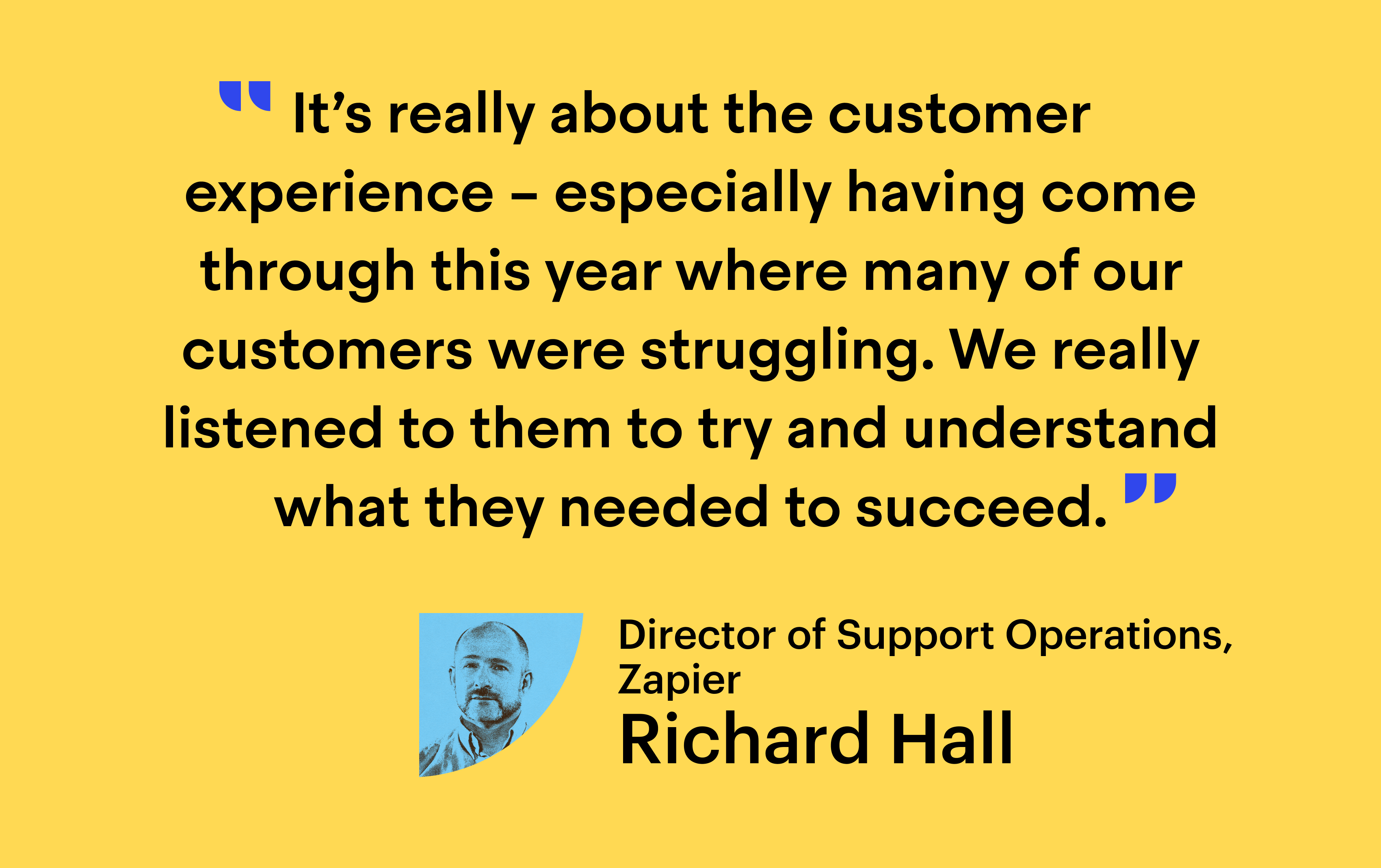
The support operations organization puts a great deal of focus on listening to customer needs and paying close attention to user experience within the product. Dedicated to championing customer outcomes above all else, Richard explains that the team looks beyond the industry-standard support metrics, analyzing adoption and engagement levels within the product to assess the impact of the support and education being provided by the team.
“It’s really about the customer experience – especially having come through this year where many of our customers were struggling. We listened to them to try and understand what they needed to succeed, whether that was a break in their payments, or to automate further because they were now working from home. All of these components had us zero in and focus on customer outcomes,” he says.
Building a health score to measure success
When it comes to measuring success at Zapier, Richard nods to two key driving factors: the success of their customers, and the empowerment of their support team members to make decisions and have full ownership over a customer query. Referring back to the idea of customer outcomes as the team’s North Star, Richard explains that if their customers are successful in running automations, it’s a big win for both the customers and their team.
“We’re building a health score around our team members,” he says, “and it’s being implemented in a way that our team values the work they’re doing because they’re measured by the customer’s success. It’s elevated the level of engagement on the team.”
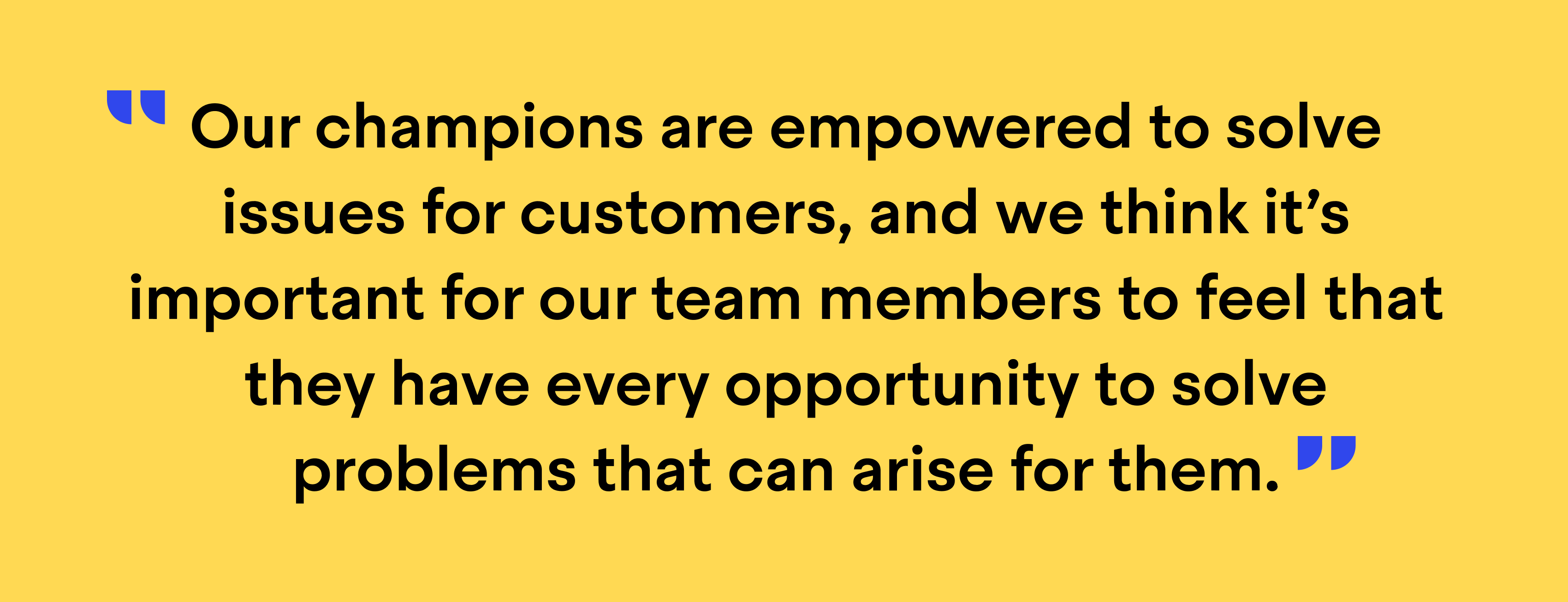
While the support team at Zapier is highly collaborative and team members often consult one another to get a second opinion on a customer query, there’s no hierarchy of authority when it comes to escalations. If a customer would like a different approach or needs additional help, the support champion who owns that conversation has the ability to do that themselves – except, perhaps, in the case of a technical escalation, in which case the engineering team is on-hand to provide help. Richard says, “Our champions are empowered to solve issues for customers, and we think it’s important for our team members to feel that they have every opportunity to solve problems that can arise for them.”
Sharing the customer voice throughout the company
In order to help their customers succeed, the team at Zapier knows how important it is to represent the voice of the customer in every aspect of what they do. For that reason, their customer champions from the support organization are heavily involved in other areas of the company. Richard explains, “Our customer support team members are in embed programs across the company, where they can really jump in and be part of other teams, and bring the customer voice and the support voice to those groups.”
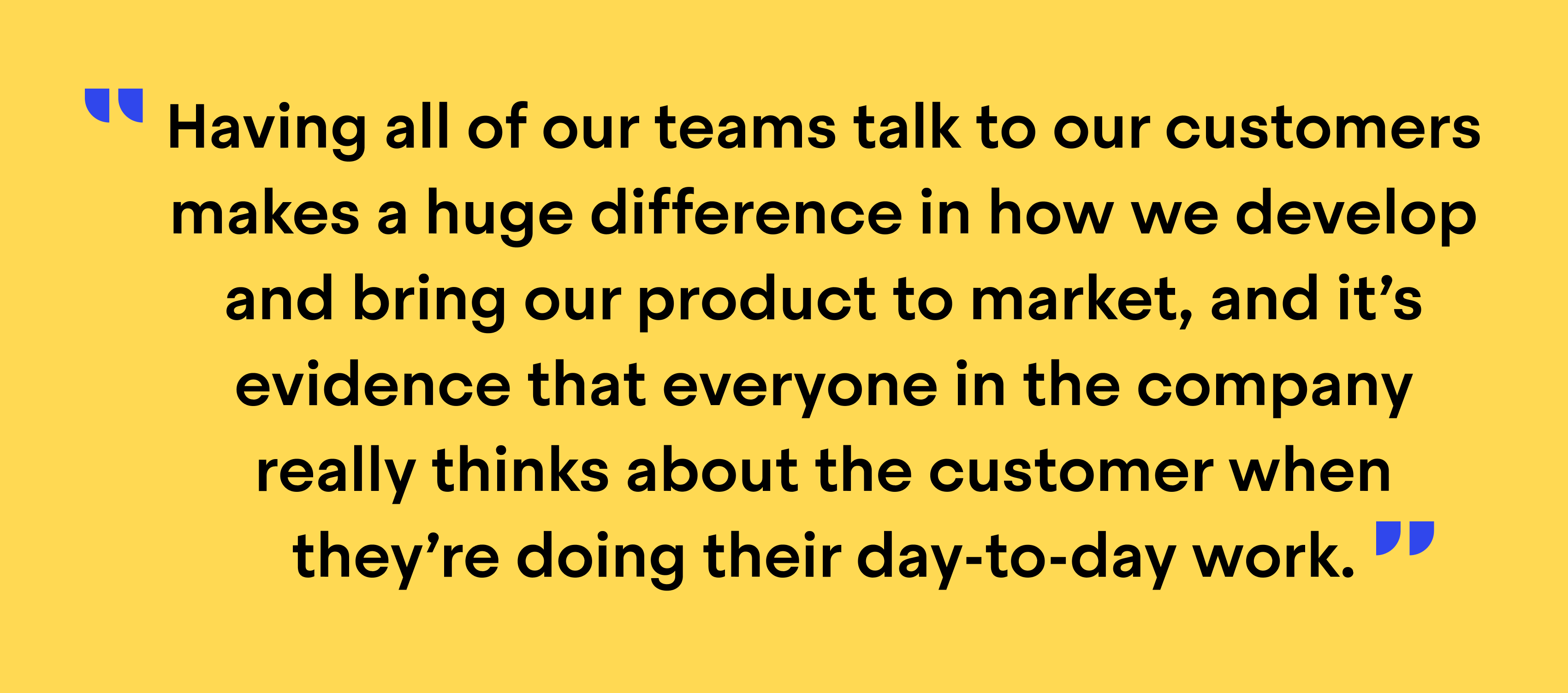
In addition to the support team being so deeply embedded throughout the company, every team at Zapier is eager to talk to their customers and teammates regularly jump into conversations – whether they’re sitting in on UX ride-alongs, partnering on posts within the community, or joining customer success calls. As Richard puts it, “Having all of our teams talk to our customers makes a huge difference in how we develop and bring our product to market, and it’s evidence that everyone in the company really thinks about the customer when they’re doing their day-to-day work.”
Offering support at just the right time
Richard details the team’s approach to proactively supporting their customers, explaining that the close-knit relationship between the support, product, and data science teams enables them to identify different customer needs at various stages of their journey with Zapier, as well as keep a pulse on the changing world of support.
“I definitely see support for customers as more a whole help solution, rather than a ticketing solution”
Speaking to the power of being proactive in approach when it comes to support, Richard says,
“I think that a lot of the time, people wait until customers are almost to the point of being fragile before support or help is offered to them. And I definitely see support for customers as more a whole help solution rather than a ticketing solution. It’s around building a help engine that really empowers people to learn, to grow, to self-serve, to move at their own pace, yet at every point where there’s a little bit of a glitch or a little hesitation or a question might arise, that some help motion is there to support the customer.”
In analyzing the customer journey, the support team is also empowered to get ahead of known issues in order to provide support to customers when they need it most. What’s more, having this insight into different problems that arise throughout the customer journey enables the team to provide the right support, at exactly the right time. “Customers in every part of their journey have different needs,” Richard says, “whether it’s an education component, or something’s broken and they need help, or they want to network and find other solutions.”
Balancing technology with a human touch
As experts in automation, the team at Zapier understands the power of leveraging technology to make processes and workflows more efficient and scalable. And when it comes to support, striking the right balance between self-service support and human support is crucial in building a strong, holistic experience for your customers.
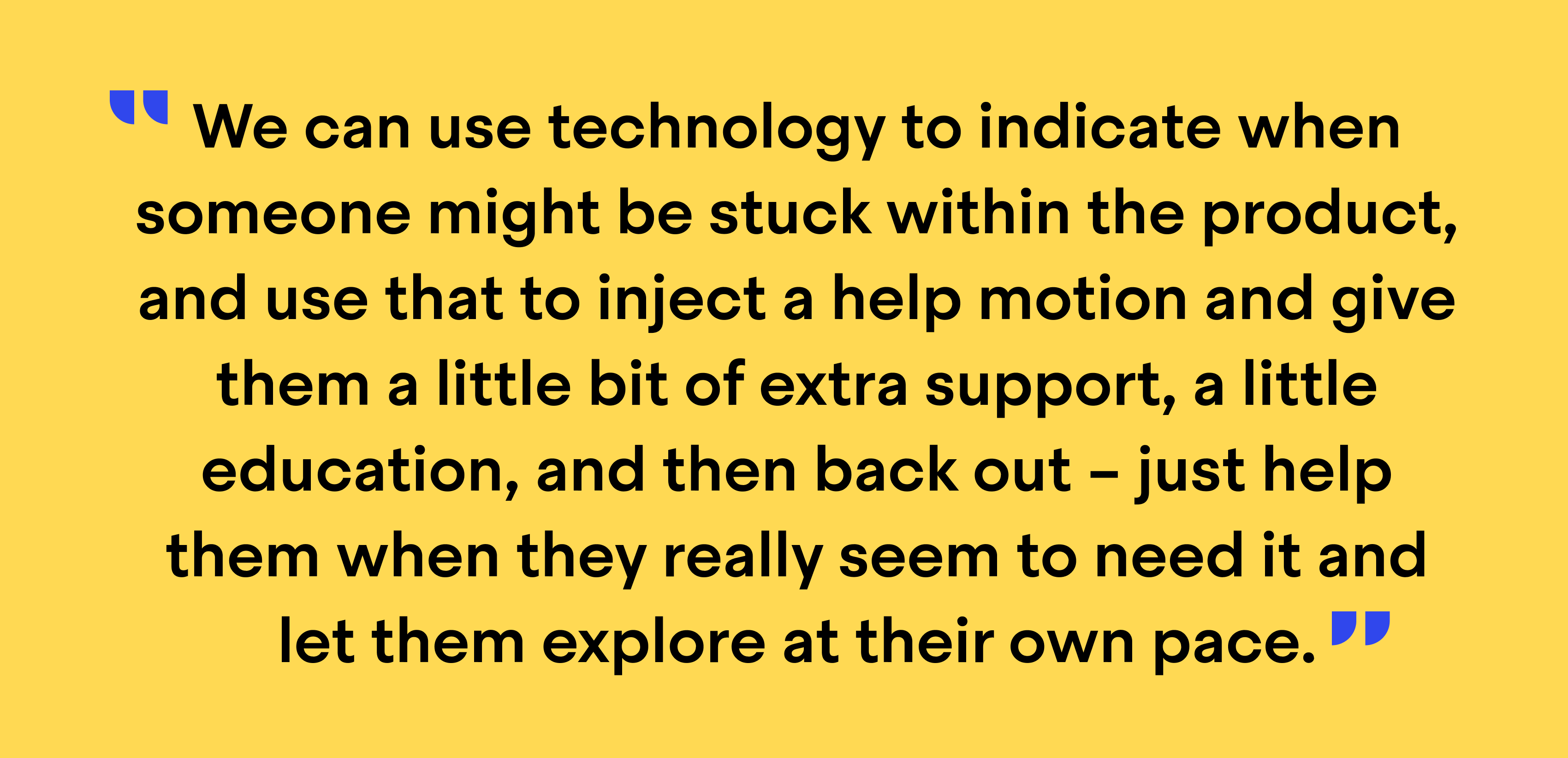
At Zapier, the team looks to strike this balance through their self-serve assist program – where customers can navigate the website, help center documents, and product on their own, with the team only jumping in if their data lets them know that someone might need additional support.
“We can use technology to indicate when someone might be stuck within the product,” Richard says, “and use that to inject a help motion and give them a little bit of extra support, a little education, and then back out – just help them when they really seem to need it and let them explore at their own pace.”
Insights on building a strong support experience
Reflecting on what it takes to build a great customer experience, Richard’s advice for other support leaders is:
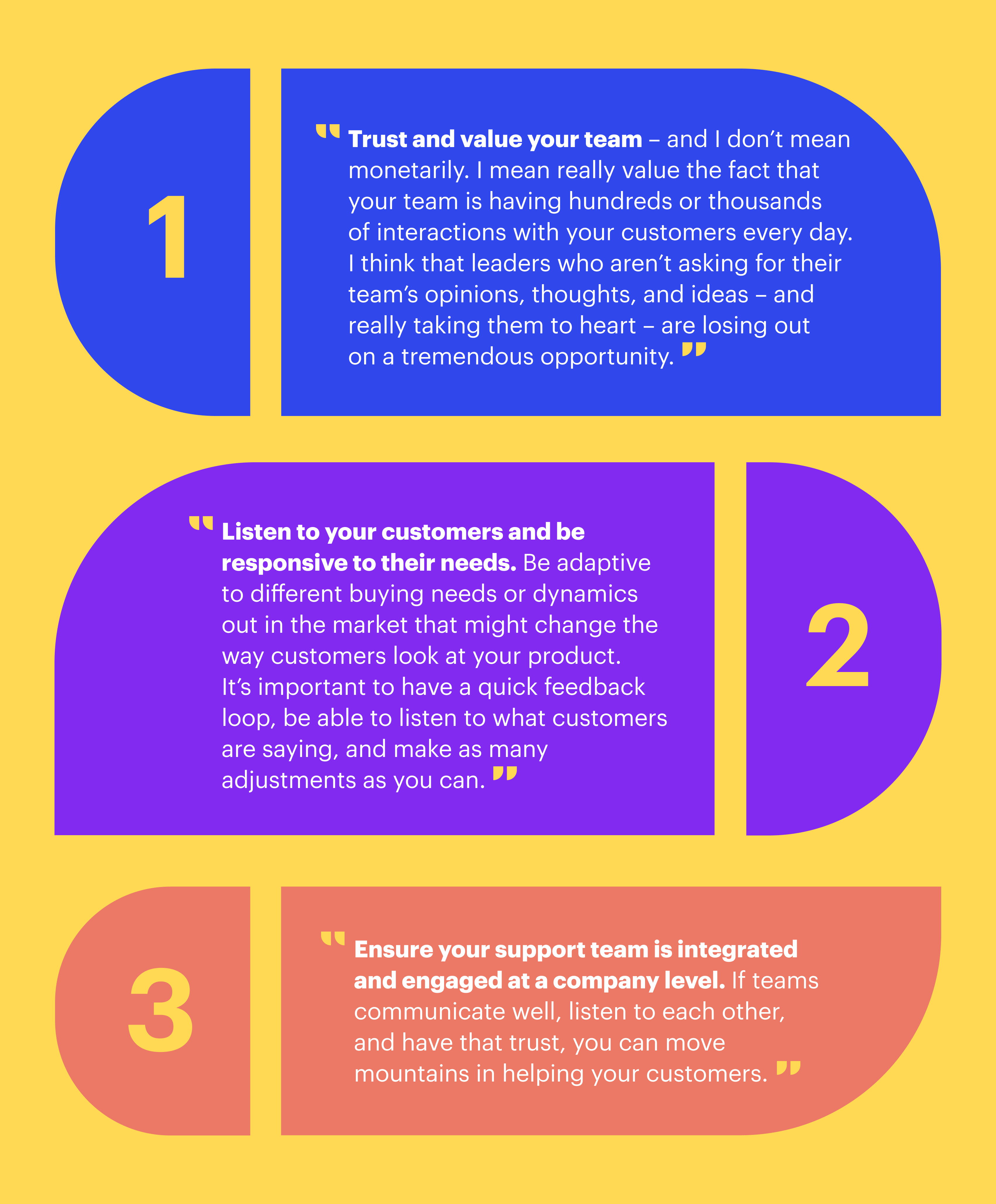
Looking ahead as the support landscape continues to shift and evolve, Richard explains that he envisions support teams becoming increasingly embedded in different parts of organizations, providing valuable insight at every stage of the customer journey. “I’m really hopeful that more companies will value the brain trust that’s in the support organization – it’s so important.”

